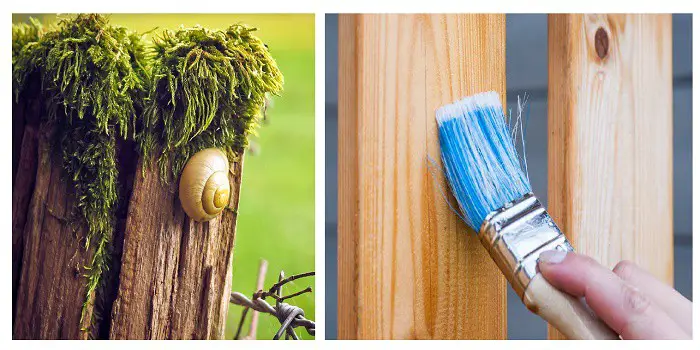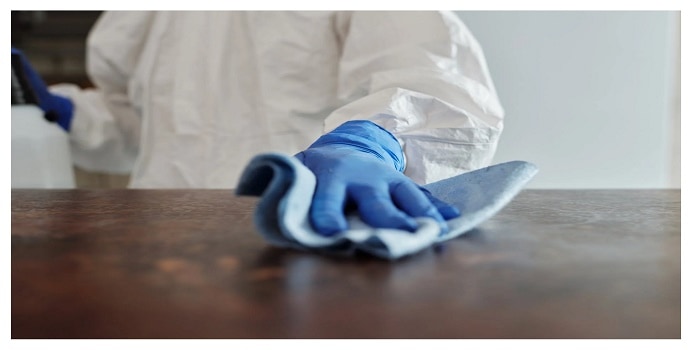
An epoxy coating can bring out the best in the wooden bar top, especially the grain, as it will shine.
The good thing is even if you have a previous polyurethane coating on a tabletop, putting up epoxy over it is possible as long as you prepare the top well.
This means you will need to use the proper techniques and be patient if you really need to do that.
Otherwise, if you go too fast, tiny bubbles will appear on the surface, and you will have to start again.
Also, be prepared to apply multiple coats in an even fashion.
The best technique is to apply thinner coats and let them get tacky before applying the next coat.
How to Put Epoxy Over Polyurethane?
Before you begin applying the epoxy finish, make sure that the polyurethane has fully dried and cured.
Now you are ready to begin.
Below are some easy-to-follow instructions on how you can do that.
1- Prep the Surface
A clear coat will bring out the beauty of the wood. You just need to know what to do before starting.
The first step is to prep the surface so that bubbles will not form.
As epoxy sticks to just about anything, which means it may gather dust before you start.
Washing with oil soap is a good beginning, but you’ll also want to sand the surface lightly to make it abraded and to remove any issues.
Be sure to sand with the grain of the wood for the best results. This will bring out its beauty and provide better results.
2- Understand the Material and Gather Supplies
Is the material you are using retaining heat?
Wood is a good insulator of heat, so you should avoid a chilly epoxy as it might make the wood expand.
Be sure that the room temperature is above 64 degrees F and that the epoxy is at room temperature as well.
This will help prevent bubbles from forming, as cold epoxy tends to expand when it warms.
For those with little to no experience in applying epoxy, you can start with the products such as Pro Marine Supplies tabletop epoxy resin, Super Glaze, or Valspar.
All three are easy to apply and provide good results if you have prepped the wood properly.
Alternatively, you can look around to find any other epoxy finish that can work for the type of wood you are planning to prepare.
3- Apply the First & Second Coats with a Roll & Tip Method
Once you are ready with the right products, be sure to allow plenty of time to complete the job.
This means working when the temperature is just right.
For applying the first coat of epoxy, you can use what is known as the roll and tip method.
Once the first coat has become tacky, you can apply the second coat.
Judge the results and if another coat is needed, wait until the second coat is tacky before you begin.
What is the Roll & Tip Method of Applying Epoxy?
This method is rather simple.
In this, you will need to apply a thin layer of epoxy with a foam roller and then drag another roller which is cut into sections behind it.
Be sure the surface is smooth before using this method. Otherwise, you might lose bits of the foam.
Sand after the first coat is dry to remove any particles, and then apply the second coat.
If bubbles start to form, you can use a hairdryer to push them down.
A thick finish will require two, three, or four coats. And when applied correctly, the finish will last for several years and enhance the appearance of the wood.

Will Epoxy Stick to Old Polyurethane or Varnish?
Yes, they will.
Epoxy and Polyurethane compounds are both a kind of thermoset plastics.
So, if you put one over the other, these two substrates bond well to each other as long as the surface you are working on is clean and slightly abraded.
As a general rule, you should not apply epoxy resin over other coatings if they are still fresh. This will cause damage to the layer of epoxy you try to put over.
If you want to proceed, then make sure that the previous coating is completely dried and has been cured.
Problems You May Face with Applying Epoxy Over Polyurethane
Just keep in mind that if you are applying an epoxy coat over varnish or polyurethane, then you will need to apply two to three coats for the best protection.
Also, remember that applying epoxy resin over poly or any varnish may cause the epoxy to become soft.
Even if it does not become soft, an epoxy resin will not produce a finish like a varnish.
Another common issue is the formation of fisheyes that can make the surface quite unattractive.
This is why many experts believe that it is better to apply the epoxy before the varnish to provide it with a stable base. This will work quite well on wood.
When applying epoxy first, you may not need as many coats of varnish to get the look you want.
However, if the varnish has not been applied correctly or has issues that warrant addressing, there are a couple of things you can do.
- Sand away the varnish
- Add additional coats of epoxy
- Apply the varnish again
By sanding off the varnish first, you can apply more epoxy, which creates a stable base for the new varnish to be added.
And after you have applied the epoxy, expect the epoxy resin to take three days or 72 hours before it fully dries.
Below are a few videos that you can watch to get more help on how to put epoxy on a bar top or a countertop...

Hi, I am Mark Garner a professional carpenter, woodworker, and DIY painter. I live in the small city of Peoria, Arizona as a semi-retired woodworker. I have started this blog with a simple motive to help you with my wood experience in this sector. If you like to know more about what I love doing and how it all got started, you can check more about me here.




